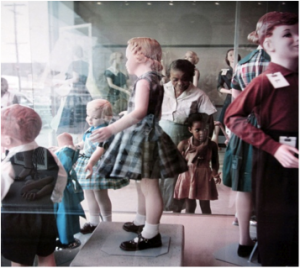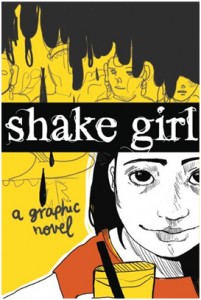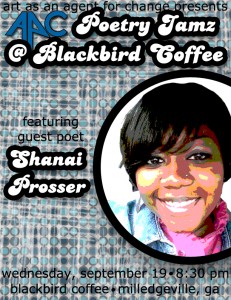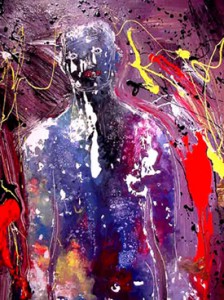Art as an Agent for Change is a non-profit arts organization that promotes artistic collaboration, community engagement, and social change through the arts.
Saturday, September 29, 2012
Art Through Technology - Huang, Fizel, and the D-Dress
When most people think of couture fashion they don't think of a piece of software. However, designers Mary Huang and Jenna Fizel have made this a part of the mindset of many fashionistas. They have dubbed the software 'D.dress'.
The 'D' in the software stands for 'delauney triangulation' which is the algorithm that Huang uses to deconstruct each dress into a series of triangular patterns. This app allows the user to draw a dress, turn it into a 3-D model, and export the cutting pattern to make a real dress. The dress is then sized to your measurements and a laser cutter cuts the pattern out of fabric and sews it into the dress.
While the duo is not the first of the fashion industry to use 3-D printing for their designs, they are perhaps the most innovative. Miss Huang realized the issue with most modern day 3-D design software that allowed designers to try to simulate cloth. Instead, she chose to take the opposite approach and design her software around a more computational aspect.
Instead of trying to design dresses to look like flowing cloth, low resolution triangular shapes are used, giving the dress a more avant-garde look. Huang says that this “prompts people to imagine what the resulting dress would look like rather than expect an exact rendition of the screen image.”
With this app, fashion is available to anyone with an Internet connection. With little to no time in the app and sometimes with some completely random scribbles, an entire garment can be made with all the feel of an avant-garde runway.
They have begun calling the software 'computational couture' and they believe that utilizing this new type of technology is the future of fashion. While previously made dresses can be purchased through their label, Continuum, the cutting patterns are downloadable to any computer free of charge for those who would prefer to sew and create their own dresses.
Perhaps standardized sizing will soon be a thing of the past as the fashion of the future takes the industry by storm.
Wednesday, September 26, 2012
Art Activist of the Week - The Gordon Parks Foundation
Art activism isn’t just about acknowledging the activists that contribute today: we should also recognize and take lessons from the creative crusaders that lived before us. These are the ones who helped make it possible for us to freely express our thoughts on social issues, so that we can promote change in society.
Photographer Gordon Parks was born into poverty in Kansas in 1912. Parks was a visionary even in his youth, first garnering his inspiration from images of migrant workers published in a magazine. He went on to purchase his first camera from a pawn shop, and his skills were entirely self-taught.
Due to his own ambition, he acquired a photography job with The Farm Security Administration (FSA) that chronicled the nation’s social conditions at the time. This is where he began to channel the previous inspiration that spurred his interest in photography.
After the FSA closed in 1943, Parks became a freelance photographer intent on pursuing his passion to address humanitarian issues through his work. He became the first African American staff photographer and writer for Life Magazine, where he captured the social and economic impacts of racism and poverty through his photos while paving the way for more minorities to become professional photographers.
Parks wasn’t just taking photos of daily life. He was defining an era in our nation’s history. He showed segregation, Jim Crow, and racial prejudice where they festered every day in homes, on the street, and in shops. He sought to create an image of a social climate that need to be changed, and he believed that he could help that change to occur by using the universal medium of art.
He was also a composer and an author, focusing on the same subjects displayed through his passion for photography. He died in 2006 after a life of fighting for the ideals that he loved, while creating the art that he loved. Parks lives on in the spirit of his works, and the history that he has creatively documented for us so that we may learn from it and continue to grow as a society.
For his efforts, Gordon Parks is our Art Activist of the Week.
Learn more
http://www.gordonparksfoundation.org
Check out some photos
http://www.gordonparksfoundation.org/archive/
Monday, September 24, 2012
Tips and Truths with A.A.C. - CNF
[caption id="" align="aligncenter" width="327"]
 Find out more about the phrase "couch potato" in this week's random truth![/caption]
Find out more about the phrase "couch potato" in this week's random truth![/caption]- You do not have to have an exciting life to write good creative non-fiction. Just because you have never been out of the country, never been chased by a lion, or climbed Mount Everest does not mean you have nothing good to write about. In fact, creative non-fiction is at its best when you use it to talk about everyday experiences that have given you insight.
- To get started, pick a topic, then think of three or four experiences you have had that relate to that topic. For ideas, think of a current news event, and use your experiences to talk about that event. Choose something that makes you angry or excited or intrigued--as long as it makes you feel something!
- One good way to structure your piece is to switch between your experiences and your commentary on it. For example, start off telling the story of your experience, then in the next paragraph talk about how it has given you insight into your topic.
- Read lots of creative nonfiction! There are so many different ways to write it, and the best way to learn is from the experts. Some good authors who write creative non-fiction are David Sedaris, Joyce Carol Oates, and E.B. White. You can find many of their books at your local bookstore or library.
- As always, have fun!
Happy Writing!
Random Truth of the Week: Robert Armstrong trademarked the phrase “couch potato” in 1976.
Saturday, September 22, 2012
Art through Technology: Tempt and the Eyewriter
When legendary graffiti artist Tony Quan was diagnosed with amyotrophic lateral sclerosis (more commonly known as Lou Gehrig's disease) he thought his career as an artist was completely over.
This artist, also known as Tempt, faced complete body paralysis in his hospital bed. His confinement to his bed as well as his loss of ability to paint and draw left him what he would later describe to a reporter as a “sense of total emptiness."
This was until the members of Free Art and Technology, OpenFrameworks, the Graffiti Research Lab, and the Ebeling Group communities teamed up to create an open-source eye-tracking device that would allow Tempt to draw using only his eyes.
When asked how he feels about being able to draw again Tempt replied, “I can't even begin to describe how good it feels to be able to rock styles again, and through my art I've been able to raise awareness about my disease.”
The eyewriter is surprisingly simple technology and can be made in about a days time with under fifty dollars invested in the project. The Eyewriter community has put together a prototype and given easy access to instructions for many people to build their own eyewriters.
The software itself is less complicated than one might think and it works with the Eyewriter as well as commercial eye-trackers such as MyTobii. The software is made specifically for graffiti taggers, namely Tempt, who has since the invention of the Eyewriter been able to participate in galleries internationally.
He puts all profits he receives from any gallery into the TEMPTONE ALS FOUNDATION a non-profit organization dedicated to helping people who suffer from Lou Gehrig's disease as well.
Tempt himself says that, “Art is a tool of empowerment and social change, and I consider myself blessed to be able to create and use my work to promote health reform, bring awareness to ALS, and be able to help others.”
His name, which was legendary before, has come to know new heights and his graffiti tags have been replicated by robots, people, and paint ball machines. His story brings hope to those who suffer from disease. Now, sitting in his hospital bed he can still pursue his two true loves: art and social activism.
Friday, September 21, 2012
The Arts Make History: Gwendolyn Brooks and Your Identity in Art
By Bri Neves
Gwendolyn Brooks was a world-changer from the time she was born. Ambitious and dedicated to her craft, Brooks had around 75 poems published by the time she was 16.
Later on, in her adult life, she sought higher pursuits for her writing, eventually winning several prizes and fellowship for her writing, including becoming the first African-American to win the Pulitzer Prize for poetry. In her lifetime, she had published over 20 books of poetry, a fiction novel, and several prose works, including an autobiography.
But besides this impressive list of accomplishments, how else is Brooks defined? As a “black poet”? A leader in the civil rights movement? Yes, but she was much more than that.
She was a poet, a conveyer of language, and contrary to popular belief, her works did not only explore racial issues. Embedded within many of her poems include religious themes, sexual issues (such as prostitution), and many of her poems, such as those in her Gay Chaps At the Bar poetry collection, depict life in World War I from soldiers’ perspectives.
Gwendolyn Brooks was someone who cared about many different things and those cares, along with her rhythmic lines and riveting imagery, were second nature to her. She used forms such as sonnets and ballads to get her point across and even experimented a bit with free verse. She had ideas and was moved to write them down.
Along with all of her success, Brooks led a relatively low-key lifestyle. She married her husband Henry Blakely in 1939 and had two children. She worked many odd jobs, including secretarial work, before she finally got a job as a Creative Writing instructor.
All in all, Brooks was an ordinary person with an extraordinary life fueled by her passion for the craft of writing. Which brings me to my next point…
How does your craft identify you? Look at your works. What do you write about? Or sing? Or play? Or paint? If somebody only were to know you based on your creative input, what would they have to say about you?
With your creative gift, you not only have the gift of impact, but a medium (or multiple mediums) in which to channel it from. You have a way to reach people. Use it. You may not become the next Gwendolyn Brooks, but one thing is for certain; the work you do will not be wasted.
Happy crafting!
Wednesday, September 19, 2012
Art Activist of the Week - Stanford Graphic Novel Project
“Beware of powerful men: They may kill you if you refuse their advances. And beware of their wives: They may kill you if you do not.”
This warning was destined for a young girl, barely a teenager, with impoverished parents who were getting up in age (at least by Cambodian standards). She was compelled to drop out of the sixth grade to take up work and support her family. At the tender age of perhaps eleven or twelve, she began selling fruit shakes on busy intersections, even late into the night when most American preteen girls would be in the comfort of their bedrooms staying up late only to stalk their peers on Facebook.
Two years later, she was introduced into the life of a karaoke girl where she would saunter about in risqué outfits and flirt with cameras to make her living. Unfortunately she was even further introduced into the life of a mistress of one of the many prestigious older men who seek out these youthful girls already in a world too adult for them.
Lastly, she was forced into a situation that consequently altered her life forever. She couldn’t leave the married man taking advantage of her because of his threats, so she was brutally attacked with acid by his jealous wife and permanently physically and emotionally scarred.
This is the story of Tat Marina and many other impoverished Cambodian girls who have been seduced by older wealthy men and forced to face acid attacks from enraged wives. This is also the story that inspired the creation of “Shake Girl”, a massive collaborative effort between fifteen students and two instructors of the Stanford Graphic Novel Project and of journalist Eric Pape who interviewed Marina upon visiting her in 2001.
In the winter of 2008, this group worked vigorously to transform Marina’s experience into a graphic novel that would create awareness about the issue of violence against women in general, but would more specifically call attention to the horrifying acid attacks in Cambodia. It was also created to encourage donations to organizations that will strive to end human right violations in Cambodia and help establish women’s rights.
In a matter of weeks, their effort resulted in a heartfelt piece of literature that they hoped accurately captured the complexity of the lives of young girls living a world away from them. For their dedication and enthusiasm to make the story of these girls known, the members of the Stanford Graphic Novel Project are our Art Activists of the Week.
Want to take a look? Check it out at http://www.stanford.edu/group/cwstudents/shakegirl/pageturn.html
Learn more at
http://www.stanford.edu/group/cwstudents/shakegirl/index.html
Tuesday, September 18, 2012
This Week in A.A.C. - Poetry Jamz
By Natalie Sharp
A.A.C. proudly presents September's installment of "Poetry Jamz @ Blackbird Coffee" in Milledgeville, GA. We are excited to welcome the wonderful and talented Shanai Prosser to the stage, but inquiring minds may want to know a little more about her.
Shanai is a graduating senior psychology student at Fort Valley State University. Born and raised in Irwinton, Georgia, she is a self-proclaimed southern belle. Prosser is a writer and poet who started to develop her craft in 1999. Says Shanai, "Pain is one of the reasons I call myself a poet; seems I write best whenever I am in my feelings." As the mother of a five-year-old son, Prosser claims that her son and her Rock sustain her in the midst of her everyday life.
Before Shanai goes on, there is an open mic for anyone with something to express. Are you a writer? Let that page meet the stage and be heard!
We plan to pack the house for Poetry Jamz this month, and we would love to see your smiling face in the crowd. Come on out this Wednesday, September 19 at 8:30 PM to Blackbird Coffee in downtown Milledgeville for an evening of poetry the likes of which you've never seen.
Monday, September 17, 2012
Tips and Truths with A.A.C. - Flash Fiction
[caption id="" align="aligncenter" width="240"]
 Which of these soda varieties does the least damage to tooth enamel? Scroll down to find out if your guess is correct in this week's random truth![/caption]
Which of these soda varieties does the least damage to tooth enamel? Scroll down to find out if your guess is correct in this week's random truth![/caption]Flash fiction is a form of the short story that is very short, usually around five hundred words or less. Here are some tips when writing it:
- Keep the story to one specific moment. What gives flash fiction its power is its ability to vividly describe a particular event or moment.
- Stick to only one or two main characters. Because flash fiction is so brief, it’s best to stick to one or two characters because there is not enough time to develop more characters. Save stories with more than two characters for longer pieces, like short stories or novels.
- Be picky when choosing a moment for your flash fiction’s setting. Because there is only so much time to tell your story, its best to pick a moment with staying power. For instance, you could write about a person proposing marriage to his or her significant other, a character finally finding something important to him or her, or you can use this format to write about a particular moment in an ordinary day. If you go with the last option, find something unusual or interesting in that ordinary day. For example, say your character is taking his or her daily walk and sees something there that they don’t usually see. It could be a person, place, animal; the sky is the limit, as long as you can make it believable.
- Save your work! That way you can go back and revise it. Also, you can use the scenes you create in your flash fiction in longer pieces, like short stories or novels.
- Flash fiction is also a great writing exercise if you are stuck or do not have a lot of time to write. Give yourself a specific moment and see what you come up with, keeping these tips in mind.
- As always, have fun!
Happy Writing!
Random Truth of the Week: The soda that does the least damage to tooth enamel is root beer.
Wednesday, September 12, 2012
Art Activist of the Week
Madman #11, William Alexander (1941-2008)
By Whitney Gray
I truly believe that art has healing properties. Any creative manifestation of the self is an opportunity to reach out to others and leave an impact for society to enjoy for years to come. It is also a way of reaching inward to learn more about the person within and to convert any anger, fear, joy, or excitement into something tangible. The pride and satisfaction that comes with this can be a source of motivation for anyone, but it can be especially beneficial when a mental illness hinders one’s ability to cope with everyday emotions while attracting harsh judgments from those who lack understanding.
Fighting a mental illness is a struggle within itself, but fighting the social stigma that accompanies it is a whole other battle. The Awakenings Project, founded in 1996 by Robert Lundin, is a grassroots initiative that strives to do both. Lundin, a member of the board of directors of the National Alliance for the Mentally Ill of Illinois (NAMI-IL) at the time, created this program in hopes of giving a voice to those who live with depression, schizophrenia, bipolar, and other psychiatric disorders, and this voice is the creativity that is within them. The Awakenings Art Show allows those who encounter a loss of motivation and self-identity to channel their talents with various forms of art so that they may gain a new sense of hope and purpose. When artists submit their fine art, music, literature, or drama to be displayed in these shows, there are opportunities for feedback and questions concerning their art as well as having poems, short stories, or scripts published. These contributions to our culture are beneficial for fostering creativity, but they also help give a face to mental illnesses and promote further understanding and acceptance of those who carry them.
In 2006, The Awakenings Project was awarded the "Outstanding Contribution to Recovery by a Non-Profit Organization" award from the Irwin Foundation at Celebration Recovery. It has also been awarded the “Stigma Busters” award from Ecker Center at the Elgin Country Club in 2010. For its efforts in utilizing art as a means to break barriers and promote social equality, today I dub Robert Lundin and all who are involved with The Awakenings Project Art Activists of the week.
Victim to Victor, Irene O'neill
For more information about this organization, visit http://www.awakeningsproject.org/index.shtml
Tuesday, September 11, 2012
This Week in A.A.C. - Artz Jamz

A hefty part of what we do here at A.A.C. is development—finding out which new programs and services will benefit the community to which we belong. Some ideas stay in the incubator a bit longer than others, until we can work out the kinks and figure out how to really do a program well because we don’t like half-steppin’ around here.
That said, the newest program fresh out of the box is A.A.C.’s Artz Jamz for Kidz. Just what is Artz Jamz? It is a program that allows local instructors in various arts areas—music, dance, visual arts, poetry—to bring their skills and knowledge to children ages 8-12. The first interest meeting was held here in Milledgeville at Georgia College on Monday, and the turnout was pleasing. It is certainly our hope that Artz Jamz will bring an outlet for creative expression to Baldwin County’s youths.
Interested in getting involved as an instructor or in bringing your kids? The next meeting for instructors will be held Monday, September 17 at 6 PM in the Georgia College Arts & Sciences building, Room 272. The first Artz Jam will be October 6, 2012 from 8 AM to 12 PM at Wray Homes in Milledgeville.
Monday, September 10, 2012
Tips and Truths with A.A.C.
Here are eight poetry writing tips for your personal enrichment, followed by a random truth also for your personal enrichment.
[caption id="" align="aligncenter" width="340"]
 Cary Grant: Classic Hollywood actor. Arsenic and Old Lace. Eyes that gaze deep into your soul. And the subject of this week's random truth![/caption]
Cary Grant: Classic Hollywood actor. Arsenic and Old Lace. Eyes that gaze deep into your soul. And the subject of this week's random truth![/caption]Tip 1: To get started, pick a specific moment and write about how it felt, or write about an object that is special to you, like a piece of jewelry or a card. Whatever you pick, just be sure its something that gives you a lot to say.
Tip 2: Use deliberate lineation- How short or long a poem is creates a certain atmosphere, and the length of each line affects this as well. Use shorter lines if you want to focus on specific words, and longer lines to explain the particular moment or object you’re talking about.
Tip 3: If you are writing a form poem, such as a sonnet, makes sure the subject matter fits the form of the poem so it doesn’t feel forced. For instance, to use the sonnet example, use that form to describe a specific moment or person that changed you in some way, whether its how you thought about something or your view of the world. This makes sense for a sonnet because the first part describes the situation, then the second part has a twist, and the third part tells what happened or changed as a result of the twist.
Tip 4: After you write your poem, read over it to make sure everything in it is there for a reason. Poems have limited space, so economy of language is important. You may want to do this a day or two after you write the poem so you can see it with fresh eyes.
Tip 5: Write as much poetry as you can, and save it. You have heard it a million times, but its worth repeating: The more you write, the better you will get, and the more you will understand how to convey what you’re saying. Also, saving your poetry will help you see the progress you have made.
Tip 6: Read lots of poetry. Doing this can give you ideas for future poems as well as show you how to effectively use figurative language and symbolism.
Tip 7: Show people you trust your poetry. The best way to tell if a poem works is to read it out loud to someone you trust, like a teacher, family member, or friend. He or she can tell you what works and what doesn’t, though for the best advice, go to someone you know who writes or teaches poetry.
Tip 8: Have fun! Experiment with different forms and subjects and enjoy what you learn from that.
Happy Writing!
Random Truth of the Week: Actor Cary Grant’s real name is Archie Leach.








